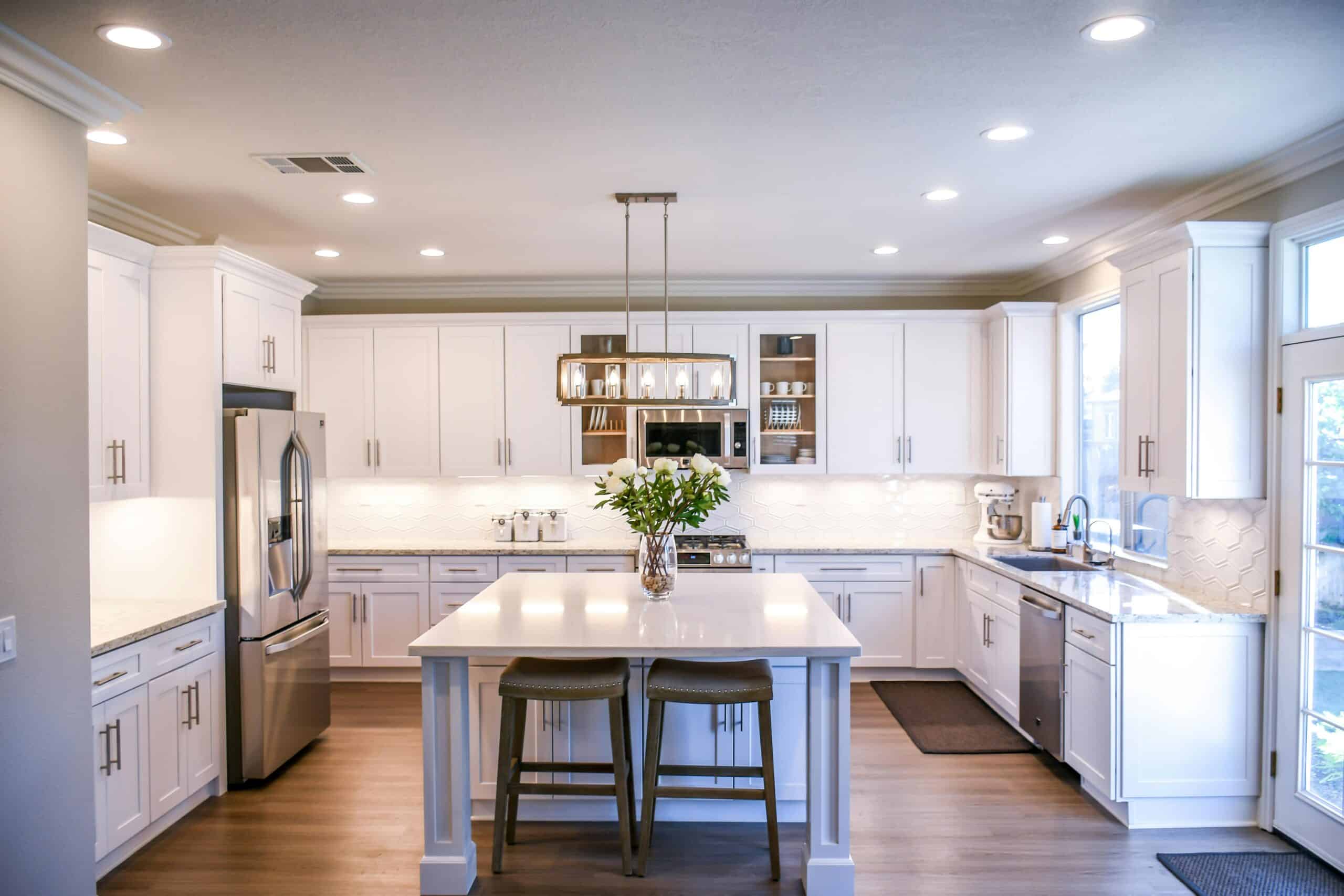Are you looking for a way to remodel your kitchen sink and do not know the exact size to go with? If you are undecided, choose a standard kitchen sink size since it fits most kitchens. This article discusses some sink sizes that will leave your kitchen looking revamped and modern.
The standard kitchen sink sizes range between 22 inches long and 30-33 inches wide. We have listed the qualities and dimensions you need to look out for in these kitchen sinks. So, without wasting time, let’s get into the article.
What Is the Standard Kitchen Sink Size for A Small Kitchen?

If you have a smaller kitchen, you don’t need to worry about the sink type that will fit it. There are a lot of kitchen sink options to explore for small spaces. For example, drainboard sinks with removable cutting boards are the best for compact kitchens. These sinks also contain drying attachments to air dry your utensils if you do not have a dishwasher.
Every sink type can work in a small kitchen as long as your kitchen sink dimensions are between 22 to 24 inches. However, if your kitchen sink size is between 27 and 30, it will be too large for a small kitchen. It would be best to conserve a lot of counter space while installing a new sink. Since you have less kitchen space, you need to use sinks designed for small spaces.
For example, single bowl sinks work best for small spaces, but if you want double bowl kitchen sinks, you will need small basins, which make your sink area look crowded. We have discussed below some kitchen sink types for small kitchens.
Common Sink Styles For Small Kitchens
1. Kitchenette Sinks

Sometimes the smallest sinks are bigger for tinted kitchens. For instance, a 22-inch sink may be too big for a tiny kitchen or kitchenette for example. This may occur if you purchase an old studio apartment or tiny home. If you have a kitchenette, you will need a sink – like a kitchen island sink or a prep bar sink.
These sink bowls are only 15 inches long and would also fit in a home bar.
With a dishwasher, dishes will pile up quickly on prep bar sinks that are tiny. If you have a tiny kitchen, you can go with a 22 inch sink, if it fits in the right place. You might as well make sure your small kitchen has room for a deeper sink bowl while you are there.
2. Wall Mounted Sinks
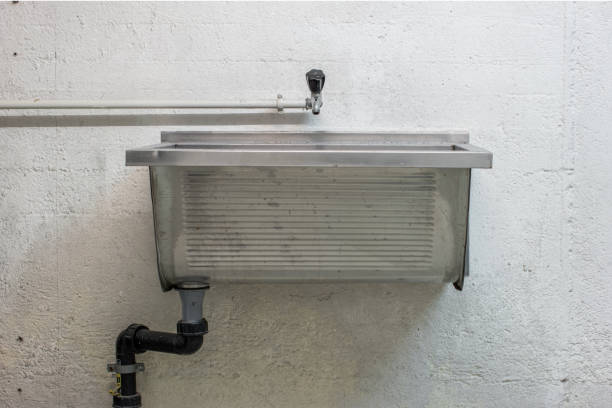
Another option for small kitchens is wall-mounted sinks. These are sinks that don’t require a counter space for installation and save space. You don’t mount them to a table, but instead a wall.
Wall mounted sinks are perfect for people who live in studio apartment or loft which is mostly opened. But you will need further upgrades to your kitchens which include freestanding counters, kitchen storage and portable stoves.
Additionally, you will have extra installation costs since you will need a professional to have it installed. The additional plumbing features that you will need also help to ensure a proper drainage of water from your sink.
3. Round Sinks

If you used to rectangular sinks, that’s the time to move to circular or oval sinks since they’ll eat minimal amount of counter space. These sinks often sit in a bathroom, but you can still put them in the kitchen as well. For this reason, when choosing a modern or unique sink it is advisable to go with an oval shape sink because it leaves you a room for extra faucets.
4. Corner Sink Style
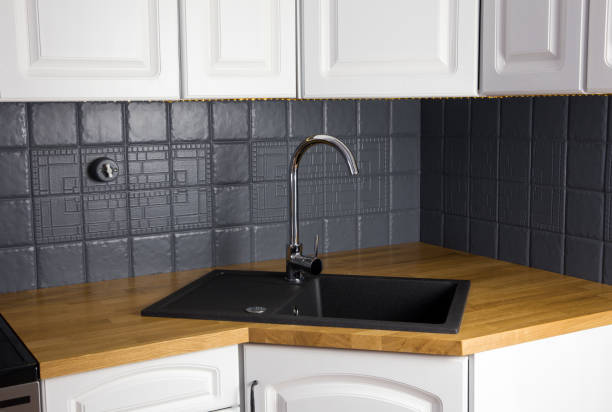
If you are hoping to seek a kitchen fit that may work its wonders in your small space requirements, you must take out the corner sink style. It has two sink basins at a right angle to one another. The sink is also designed as a double bowl sink. These sinks are also found in commercial kitchens.
This is perfect if you want to have a little extra space because it sits in a corner so that you aren’t taking up any additional counter space as you would with a rectangular double bowl sink. It also provides ample room to accommodate bunch of people in the kitchen at a time that you are hosting.
It measures about 36 or 42 inches long on its back, but the front is smaller. An 8′ corner sink is 17′ on the front versus an 11′ sink is 24′ on the front.
Kitchen Sink Designs
Classic integrated sinks are the most common types of sinks. Seamless looking, these sinks can fit in nearly all kitchen styles. Unfortunately these seamless designs are magnets for grime to stick to the rims and seams. You can find these risks in almost all homes but the issue is when you want to resize.
Other types of sinks are easier to redesign by just dropping in a new sink, but in this case you’re going to have to replace the entire kitchen countertop. Experts suggest these sinks in bathrooms rather than in kitchens, most of the times.
So, before installing an integrated sink, you should consider your household needs before installing an integrated one, since they are not easy to replace. Consider double-in sinks with deep basins if you have a large family, for instance, these are the best for soaking dishes. Yet, as a family you can choose shallow sinks or a single bowl sink because your family is small or you are alone.
1. Drop-In or Top Mount Kitchen Sink

Want to replace your kitchen sink size? Drop-in, and top mount are top options. They have in recent years become popular due to these kitchen sink types being the easiest to replace. If you think you have a small sink due to a loss in size, you can drop into a larger size. Instead of remodeling your whole kitchen counter to create the sinkhole, drill another one.
Replacing simple details or installing a drop-in sink from the top can be something you do by yourself. If you take on the job of cutting the new sinkhole, you will only need professional help. But as long as your new sinkhole is roughly the same opening as the old one, you won’t need professional help because the new sink will fit into it.
However, the downside of dropping in sinks is that they have visible rims, which homeowners do not like. So if the drain of the sink is not watertight, these sink rims are great sink traps for staunch food debris, and gunk. But you can keep the gunk from building up in the first place, simply by tightening the sink shut when installing it.
2. Apron Style Sinks
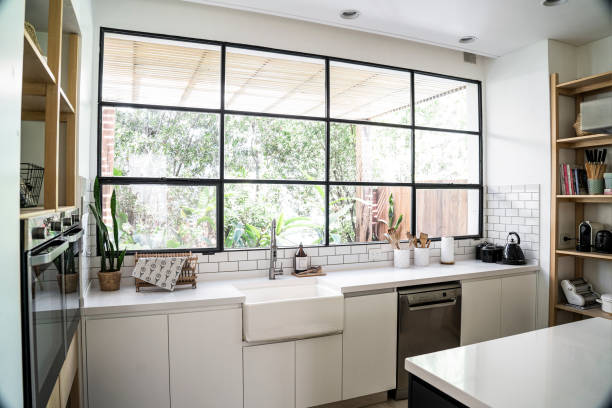
The apron sink designs name is because of the wall apron that bulges over the front counter. The drop-in sinks are very similar, but rather than a front, their front is out of the kitchen sink counter.
They are also known as farmhouse sinks since they are common in most farmhouse-style homes. Originally, they were simple fitted basins sitting on the top of freestanding kitchen counters or tables but later became integral to the sink.
Apron sinks are difficult to size because they protrude out into the counter of the kitchen. You must also consider sink dimensions as well as how far the sink will jet out first. Apron sinks up to 10 inches long can determine the depth of your sink.
The placement is also critical because apron sinks are always made with standard kitchen countertops 25 inches wide. If you are replacing your old sink with this one, take note of the dimensions, so that the sink is not out too far or too close to not have back counter space.
Apron sink types are the best for small kitchens because their sink dimension possibilities range up to 20 inches long through over 60 inches wide if you decide to incorporate it into a triple bowl model. However, the apron sink designs sometimes come with drainboards that require extra counter space.
3. Drainboard Sinks
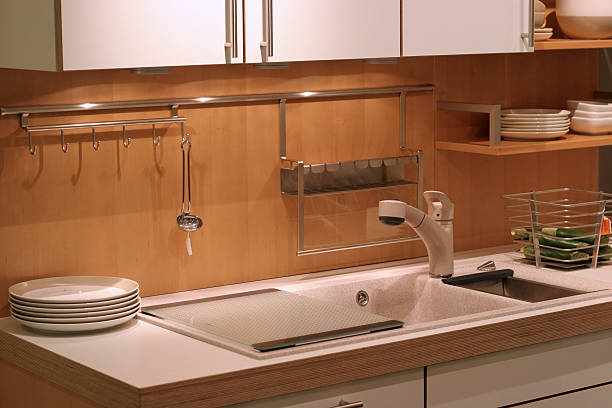
Drainboard kitchen sinks come with attached drainboards. As drop in or farmhouse sinks, they have been same installation procedure also can be found in undermount design.
They come in different sizes, from simple to complex, and they also come with cutting boards for organizing the sink. Regular drop in sinks take much less counter space but these sinks feature many things.
Why Should You Measure a Kitchen Sink Size?

There are many reasons you should consider when getting the measurement of a kitchen sink. First, since the sink is a feature you normally use in the house, picking the wrong size position puts you at risk of neck and back pain, lack of space, drippy sinks, and damage.
Of course, it’s also crucial for home sellers when it comes to building homes, just home buyers, but even more important. Home buyers do not like moving into a home that may often call for more renovations which will cost them. The inbuilt sink will especially scare off potential home buyers since not all kitchen sink sizes can be replaced with the sink size one wants.
Moreover, the sink is the most critical part of a home; home sellers are required to increase the size of the sink before selling the home. The kitchen sink size is what most buyers seriously think about when it comes to making their offer. So, when you upgrade your kitchen, it adds considerable space, which increases the value of your home to the buyer.
How To Measure a Sink Size To Fit Your Kitchen Needs
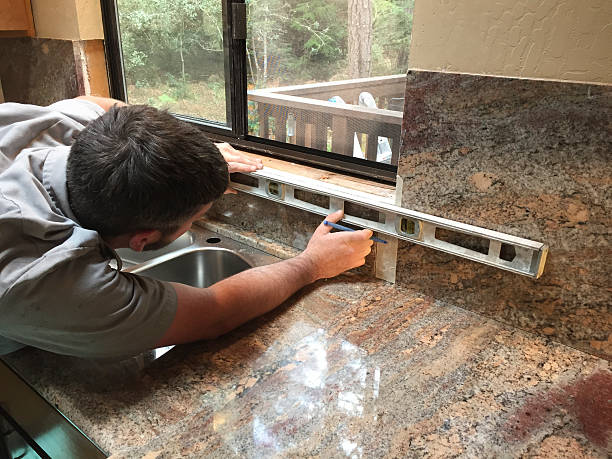
If you want to change your bathroom, kitchen, or laundry room sink, you need to know the exact measurements that will suit that area. Measurements may only differ regarding the design you want to use. For instance, most round sinks may take less space than square or rectangular ink.
To get along easily, you need to know that different types of sinks require different measurements. For example, common sinks include a farmhouse sink, an undermount sink, and a drop-in sink.
A drop-in sink is what most people refer to as the overmount sink. Simply flip the bottom and install it, drop it on your countertop. The sink lip in this kind is around the top and penetrates through the countertop.
The only difference it has with an undermount sink is the installation. You will install an undermount sink underneath the countertop, so you don’t see the lip around it.
The farmhouse sink also lacks a lip around it. However, it leaves its front exposed instead of being covered by a cabinet.
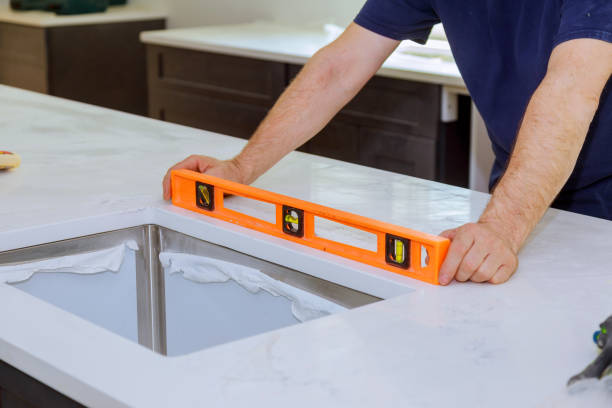
In most cases, you will measure sinks from the outer edge of the sink lip to its lengthwise. If your sink does not have a sink lip, let’s say it is the farmhouse kitchen sink or an undermount kitchen sink; you will measure it from one of the edges of the countertop and its length.
Repeat the measurements, making sure you measure from lip to lip from the countertop edge to the other edge. Again, the measurements will depend on the type of sink you have.
You will also have to measure the depth of the sink, which is how far down the sink will sit on your cabinet space. If you want to install a drop-in kitchen sink, you will measure from the top of the sink lip to how deep the sink gets inside the cabinet space.

When measuring for farmhouse, undermount, or top mount sinks, you will need to measure from the top of the countertop down going towards the deepest part of the sink basin. When installing the farmhouse sink you will also need to measure the exposed front depth of the sink.
On the other hand, if you’re installing the round or oval sinks, you just measure the distance across the widest part of the sink, which they call the diameter of the sink. You should also measure the depth of your kitchen cabinet to ensure the replaced sink goes deep enough.












